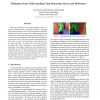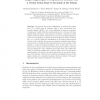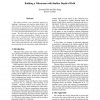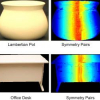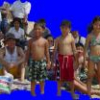146
click to vote
ICCV
2011
IEEE
14 years 17 days ago
2011
IEEE
This paper addresses scene understanding in the context of a moving camera, integrating semantic reasoning ideas from monocular vision with 3D information available through struct...
122
Voted
BMVC
2010
14 years 10 months ago
2010
In this paper, we propose a method for simultaneous human full-body pose tracking and activity recognition from time-of-flight (ToF) camera images. Simple and sparse depth cues ar...
138
click to vote
ICVGIP
2008
15 years 2 months ago
2008
Following the phenomenological approach of gestaltists, sparse monocular depth cues such as T- and X-junctions and the local convexity are crucial to identify the shape and depth ...
113
click to vote
BILDMED
2007
15 years 2 months ago
2007
We present the in-situ visualization of medical data taken from CT or MRI scans in real-time using a video see-through head mounted display (HMD). One of the challenges to improve ...
110
Voted
ICPR
2010
IEEE
15 years 4 months ago
2010
IEEE
This paper presents a new automatic approach to building a videorama with shallow depth of field. We stitch the static background of video frames and render the dynamic foreground...
112
click to vote
CVPR
1997
IEEE
15 years 4 months ago
1997
IEEE
Light power is a ected when it crosses the atmosphere; there is a simple, albeit non-linear, relationship between the radiance of an image at any given wavelength and the distance...
119
Voted
ISWC
2005
IEEE
15 years 6 months ago
2005
IEEE
This paper presents and evaluates a set of pictorial depth cues for far-field outdoor mobile augmented reality (AR). We examine the problem of accurately placing virtual annotatio...
97
Voted
ICCV
2007
IEEE
16 years 2 months ago
2007
IEEE
We present the first method to compute depth cues from images taken solely under uncalibrated near point lighting. A stationary scene is illuminated by a point source that is move...
126
click to vote
ICCV
2007
IEEE
16 years 2 months ago
2007
IEEE
Occlusion reasoning, necessary for tasks such as navigation and object search, is an important aspect of everyday life and a fundamental problem in computer vision. We believe tha...
